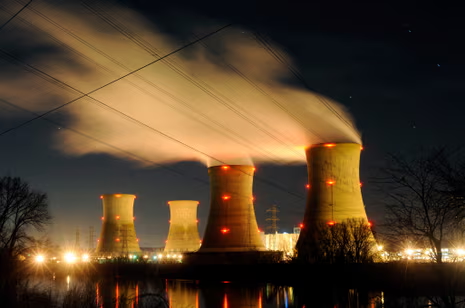Microsoft has made a significant move by partnering with Constellation Energy to tap into nuclear power, specifically to restart the Unit 1 reactor at the Three Mile Island nuclear plant. If that name is familiar it’s because back on March 28, 1979 the Unit 2 nuclear reactor melted down at Three Mile Island causing the worst nuclear accident in U.S. history.
This collaboration aims to help meet Microsoft’s immense energy needs for its growing data centers, many of which are being developed to handle the increasing demand for artificial intelligence computing. Constellation Energy, which owns the iconic power plant, plans to invest $1.6 billion to modernize and reopen the facility by 2028, providing Microsoft with a clean and powerful energy source to fuel its data center operations. Once back up and running, the upgraded plant is expected to generate enough electricity to power over 800,000 homes.
As the demand for AI technologies skyrockets, so does the need for vast data center infrastructure capable of handling massive computational loads. Data centers are the backbone of AI, providing the processing power needed for tasks such as machine learning, natural language processing, and generative AI models.
According to estimates, data centers globally consumed around 200 terawatt-hours of electricity in 2022, representing approximately 1% of the world’s total electricity use. However, as AI continues to advance, these numbers are expected to grow exponentially. Microsoft’s data centers alone are set to deploy around 1.4 million GPUs, each of which consumes thousands of kilowatt-hours annually. GPUs, especially powerful models like Nvidia’s H100 and its successor, the Blackwell B200, are critical for AI workloads but come with high energy costs.
The rapid rise of AI startups, alongside established companies, has spurred massive investments in data infrastructure. Microsoft’s investment in AI, as well as competitors like Amazon Web Services, Google Cloud, and Facebook’s Meta, has pushed these companies to seek sustainable power solutions. With billions of dollars on the line, companies are racing to keep up with energy demands while balancing environmental concerns.
The major players in the tech industry have been pushing the boundaries of how data centers are powered. Amazon, Google, Microsoft, Meta, and even companies like Tesla and OpenAI (creators of ChatGPT), have invested heavily in new energy infrastructure. Many of these companies have pledged to become carbon-neutral in the coming decades, which has led them to explore various renewable energy sources, including wind, solar, and hydroelectric power.
Amazon Web Services, for example, has long-term plans to power its operations with 100% renewable energy by 2025 and is currently the world’s largest corporate purchaser of renewable energy. Google has invested in wind and solar farms and announced that it aims to run its data centers completely on carbon-free energy by 2030. Tesla, through its energy division, not only uses solar energy to power its Gigafactories but also designs battery storage solutions to supplement renewable energy grids.
Microsoft, with its eyes on AI leadership, is doubling down on nuclear power as a potential solution to meet its needs, in addition to its existing investments in renewable sources. Nuclear power, like that from the Three Mile Island reactor, offers a carbon-free, reliable energy source that can operate continuously, unlike the intermittency of solar or wind. This partnership between Microsoft and Constellation Energy underscores the urgent need for sustainable and consistent power as data center usage continues to climb.
As the AI boom continues, the future of data center energy consumption will likely push companies to explore even more innovative solutions. AI models are growing larger and more complex, demanding even greater computational power and, consequently, more electricity. Companies are also exploring emerging technologies like liquid cooling systems to make their data centers more energy-efficient. For example, Microsoft is deploying liquid-cooled servers to manage the heat generated by its GPUs, thereby reducing energy waste.
Nuclear power, like the Three Mile Island plant, could play a key role in the future of data centers. The reliability and capacity of nuclear energy offer a consistent, long-term power solution that can keep data centers running 24/7. This is crucial as AI platforms evolve, requiring uninterrupted power supplies to ensure they remain operational.
With AI continuing to revolutionize industries—from healthcare to finance to entertainment—the energy consumption of data centers is expected to rise dramatically. The race is on to find sustainable, scalable, and economically viable solutions to power the future of technology. For now, partnerships like Microsoft’s with Constellation Energy may point toward nuclear power as an integral part of that solution, ensuring that AI’s potential is realized without compromising the planet’s future.
Three Mile Island nuclear plant to help power Microsoft’s data-center needs

